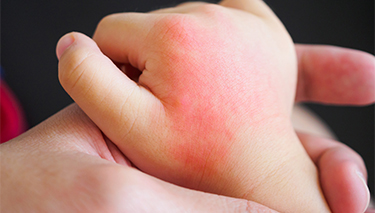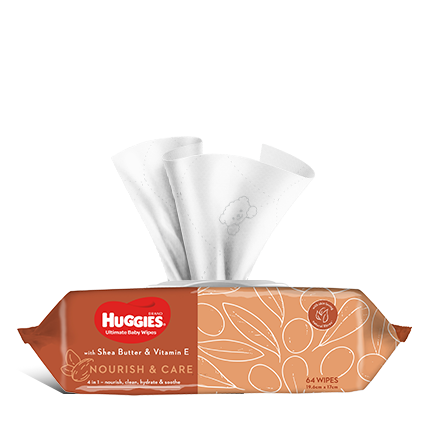Being the common start to the day, breakfast cereals are an important part of a healthy diet. In fact it seems that a child’s brekky eating habits are a reflection of their overall dietary habits. I have spent hours trawling the supermarket isles reading labels of breakfast cereals, yes it would have been easier to have made a muesli myself. You might be a little saddened to hear that many kids? cereals tend to be nutritionally inadequate (bar one or two) making healthy “adult” cereals good for the whole family, it leaves me speechless (not an easy task trust me) at times when I see those children’s cereal ads proclaiming the nutritional benefits of what is really almost a junk food, who can you trust?
Why is breakfast important?
Breakfast is your little one’s first meal after some 8-12 hours of sleep (if you are lucky!). While your child obviously hasn’t been burning up as much energy while asleep, they have still used a considerable amount regenerating the body and growing; indeed, some children literally seem taller in the morning than when they went to bed! Also, the body’s metabolic rate is highest in the morning so your child’s need for refueling is at its greatest.
When they wake up, their little bodies? sugar levels are low, and need replenishing with something quick and healthy. There are few things worse than a hungry and cranky child. Breakfast is the meal that will kick-start the brain and body, providing it with the fuel it needs.
Skipping breakfast commonly results in an energy slump mid-morning. With fuel for the brain in scarce supply, it’s not hard to work out that even basic mental and physical tasks become taxing. This is most pronounced in children, and in fact, many studies point to the influence of a good breakfast on a child’s behaviour and overall eating habits. Children who skip breakfast tend to have more body fat and may struggle with learning.
How do you pick a healthy cereal?
Most people look for cereals that are said to be high in fibre and have a good source of carbohydrates, largely complex carbs, which provide a sustained release of energy. Adults require about 30 grams of fibre a day (you don’t necessarily need it all in one go), while children need their age plus 5-10 grams. There are a number of high-fibre breakfast cereals that go a long way to meeting both of these requirements.
But you need more information in order to decide whether a cereal is good enough for your daughter or son. We need to look further. I like to offer either a cereal that has some protein (protein is the nutrient that tells the brain you are full) or find ways to add protein, for example by adding yoghurt and ground nuts and seeds.
This is how our checklist might look.
SUGAR
- Is the cereal low in added sugar? Added sugar which has little nutritional value can displace more nutritious ingredients and aid cavities, so children are best advised to avoid sugary cereals or at least eat them in moderation.
- Is sugar high up on the ingredients list? Check the ingredients panel of a cereal to firstly detect added sugar and secondly where it is on the list. If it is one of the first three or four ingredients, you may like to rethink your choice.
- Is the cereal low in total sugars? The total carbohydrates figure on a nutrition panel represents all carbohydrates, compared to the sugars figure which represents simple sugars (this can be from both added and natural sources such as fruit or milk). Check out the difference between the two and you will get some idea of the level of simple sugars that a cereal contains. The higher the sugars figure, the greater the amount of simple sugars, which are quickly used up.
- Does it have a low-moderate GI? Hmm. A little tricky if the manufacturer hasn’t given you an indication. While this is not essential, low to moderate GI cereals will provide a slower release of energy and are said to be a healthy option. However, cereals high in fibre, with added protein (ie. from nuts or by adding yoghurt) and those that contain fat (eg. milk, nuts, seeds) will have lower GIs as these nutrients slow the release of the sugars in the cereal.
- Is the cereal promoted as “whole” or “wholegrain?” This is ideal as such cereals are generally less processed and contain more of the natural constituents found in the grain, including vitamins, minerals and phytochemicals (these may provide protection against some cancers and heart disease).
Fast fact: Why is sugar such a health issue? Aside from the issue of tooth decay, sugar (table sugar in particular) and excessive amounts of simple sugars can play havoc with your body’s ability to balance blood sugar levels and insulin. Not only does this influence your brain, which mainly likes to use blood sugar for fuel, but insulin is the hormone that tells your body to store fat, hence the connection to obesity. Over time, wildly fluctuating blood sugar can lead to insulin resistance and even diabetes.
SALT
- Is the cereal low in sodium? We’re all advised to limit our sodium intake. Studies show that the majority of dietary sodium comes from processed foods and breakfast cereals are no exception. Check the 100g panel for sodium. If it is under 100mg, it is okay.
FAT
- Is the cereal low in fat (namely saturated and trans fats)? Fortunately, the fat content of most cereals is minimal. Keep in mind that low-fat products are not suitable for children under two.
Note: Use the per 100g (%) column in order to compare products as the serve size column varies from product to product.
Where does porridge fit in?
Porridge is a great breakfast, especially in winter. It is low in sodium, high in fibre, has a low GI and, according to health professionals, Avena sativa (oats) are restorative and calming to the nervous system. A cup of cooked rolled oats provides about 3-4g of fibre and the only sugar and salt is what you add. On this point, I recommend you use only fruit and yoghurt which adds more nutrients as well as healthy bacteria. What a fabulous start to the day!
What to look for on the pack/box
Example only
Below is a breakfast cereal nutrition information panel. Points to note include:
- Sugar is listed as the third ingredient and it is 34% simple sugars
- The bold highlights point out the other added sugars
- The product also has added salt which contributes to its sodium level
- The underlining shows the added compounds and chemicals
Written by nutritionist mum, author of “What do I Feed my Baby” and Huggies Baby Club nutritionist, Leanne Cooper
This fact sheet may be reproduced in whole or in part for education and non-profit purposes with acknowledgement of the source/s. It may not be reproduced for commercial use or sale. The information presented is not intended to replace medical advice.
For more information see Kid’s nutrition or Baby Care
Last Published* May, 2024
*Please note that the published date may not be the same as the date that the content was created and that information above may have changed since.




















